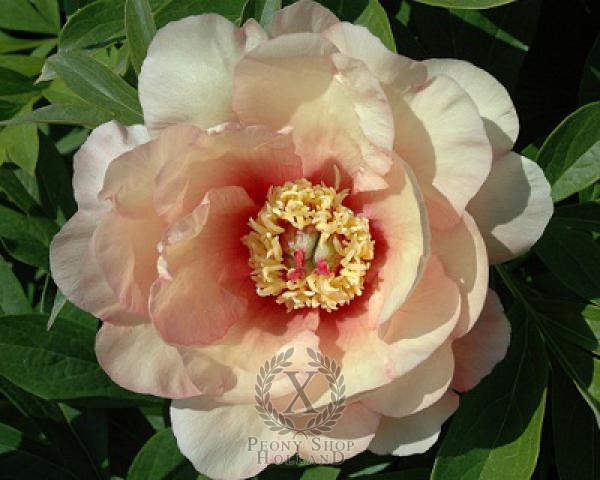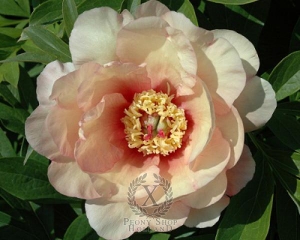Peony Sonoma Welcome
Peony Sonoma Welcome is one of the many single yellow Itoh Peonies that we grow at Peony Nursery Peony Shop Holland. Intersectional peony hybrids, also known as Itoh hybrids, named in honor of Toichi Itoh, the originator of these unique hybrid peonies. They are representative of the progeny of crossing or hybridizing the two main groups or selections of peonies; the herbaceous hybrids which die down sub surface buds during their dormant season and the tree or woody shrub peonies which retain a year round woody branch structure above ground level. During their dormant season, the Itoh or Intersectional hybrids retain only extremely short (1"-2") woody stems above ground level. Ornamentally, they achieve the best of both parental worlds with the handsome flowers and foliage of the woody tree peonies displayed on an herbaceous plant, with annual new growth originating from buds below ground level. Strong healthy plants form attractive dense, neat rounded bushes which are shorter in stature than most tree peonies. Flowers are displayed above the handsome foliage that remains greener longer than their herbaceous parents. Intersectional hybrids are somewhat hardier than tree peonies and more tolerant of heat and humidity which extends their ornamental potential in both the North and south.
Regarding Peony Nursery "Peonyshop.com" Peony Shop Holland Lutjebroek
Peony Nursery Peonyshop.com Peony Shop Holland at the moment specifically focuses on increasing unique, high leading quality peonies. It has not always been this situation. This particular organization carries an unique history with the starting point in the year 1875 accompanied by Simon Scholten who also has been growing fresh fruit for a full time income.
During the year 2001 the particular company developed their modern advertising-label & logo "Peonyshop.com" and after that they began centering on improving exceptional peonies. Within the year 2002 the particular business opened their very own on-line peonyshop with Peonies & Buxus. Throughout the year 2003 Joshua Scholten started off on with multiplying peonies. Than in 2004 the firm started to export peonies out of the Netherlands all over European countries, America and also Asia.
Right now our peony nursery is specialized in expanding and increasing the number of exceptional, top quality peony roots that are distributed and released anywhere in the world. Additionally this company additionally reduce peonies predominantly supporting the Dutch peony flower marketplace.
The main things we pride:- The high-quality of our own product
- The capability to export all over the world
- Our new substantial assortment peonies like Sonoma Welcome
- The peony crame of large potential seedlings
Growing Sonoma Welcome a peony
The fall season is certainly the ideal moment for seeding a peony. The peony plants have proven to be extremely long-lived plants lasting up to fifty to a max of seventy years, so once you'll get them placed rightly, a person will certainly benefit from the plants for years and years. Peonies prefer the bright place together with a well-drained dirt. A good air circulation available the the peony plant can also be important and vital. These environments help these plants to avoid sickness issues. To prepare the seeding hole meant for a bareroot peony plant, dig the dirt into a level around 12-18inches. Utilize garden tools to release the sides of the particular growing hole as well. It truly is very important and vital that the particular "eyes", or growth nodes, situated nearby the base of the old stem, end up no greater than Two inch below the ground surface area.


